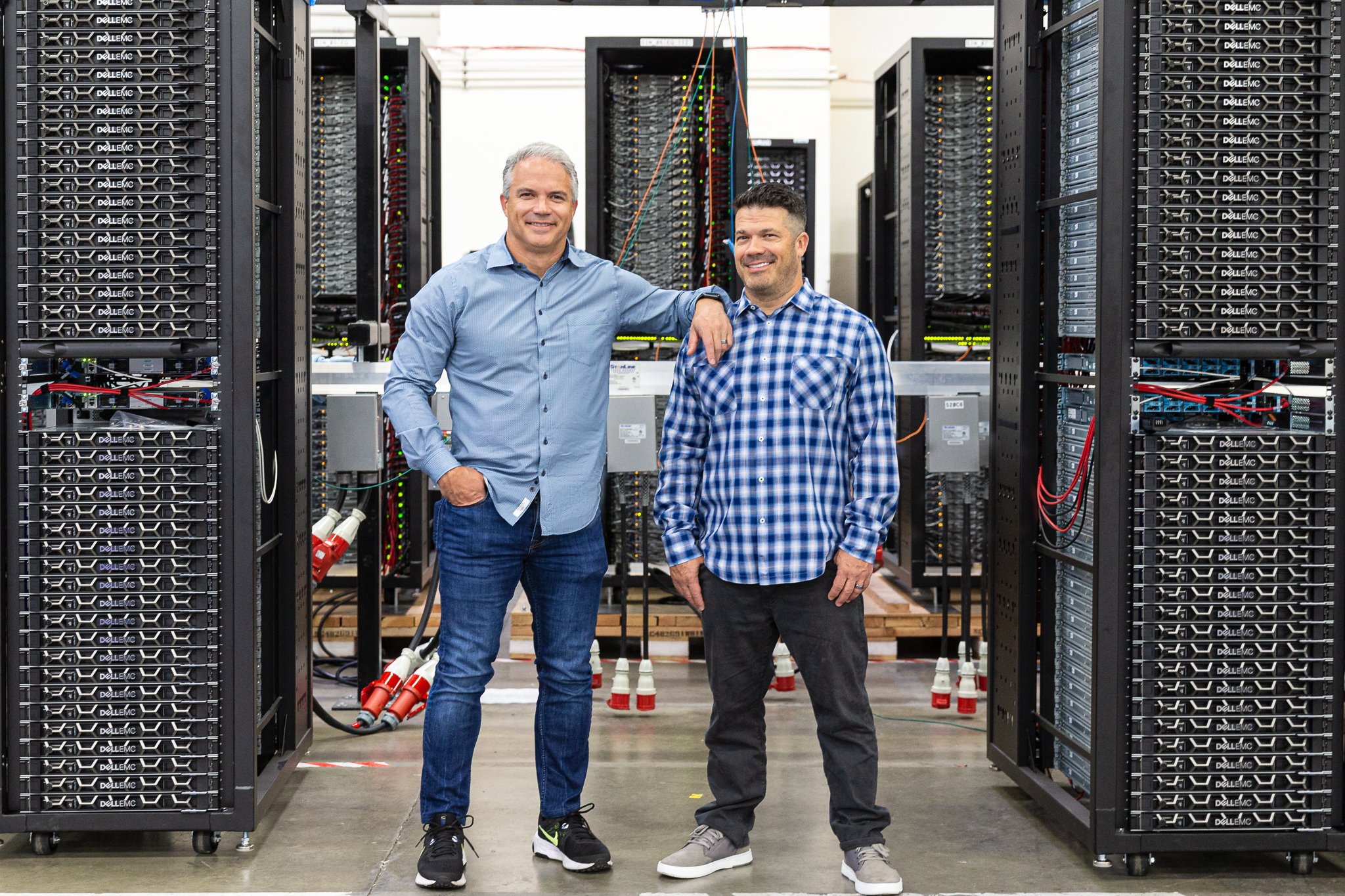Picture a world where your business can anticipate customer needs, provide unique value, and revolutionize how your employees do business. This isn't science fiction; it's the reality of generative AI applications-- and they're reshaping how businesses operate.
In recent years, generative AI has evolved from a new concept to a transformative force in business. According to a recent study from IBM’s Institute for Business Value, 75% of surveyed CEOs believe that enterprises with the most advanced generative AI workloads and capabilities will lead their respective industries.
This surge in attention and investment underscores the massive potential of generative AI. For tech leaders, understanding and harnessing this potential is becoming a necessity. As businesses race to integrate generative AI into their core operations, the real question is: How can you ensure your enterprise remains at the cutting edge? Let's explore the benefits of generative AI and the importance of integrating it into business apps.
What is Generative AI?
Before digging into the details, we must establish some baseline information. Beginning with the core question of: what is generative AI?
Generative AI is a subset of artificial intelligence that focuses on creating content. These tools are designed to produce diverse outputs such as text, images, audio, code, and synthetic data by leveraging algorithms and training data.
Although chatbots in the 1960s laid the foundation, Generative Adversarial Networks (GANs), introduced in 2014, revolutionized generative AI. These algorithms propelled AI into a realm where it could fabricate content so genuine that distinguishing it from real-world creations became challenging.
Related Read: Is Your Organization Prepared for the AI Boom? Act Now or Risk Falling Behind.
The credit for the meteoric rise of generative AI in contemporary discussions goes to two significant breakthroughs: transformers and the subsequent advent of large language models (LLMs). Transformers, an advanced machine learning technique, have redefined model training, enabling the assimilation of vast textual data without exhaustive pre-labeling. This means AI models are now capable of richer, more contextual outputs.
The 'attention' feature in Transformers lets AI understand relationships in large texts and even analyze patterns in code and biological sequences.
Why Businesses Need to Embed Generative AI into Every App
In a study, McKinsey found that companies that fully absorb AI into their operations can expect to double their cash flow by 2030. In contrast, those slower to adopt AI could lose up to twenty percent of their cash flow.
If those stats aren’t motivation enough to explore these tools for your business, let’s discuss some tangible benefits of generative AI applications and app modernization.
1. Personalized User Experiences
Modern users anticipate a level of specifically crafted personalization that resonates with them. A great example is how music streaming services offer song recommendations based on a listener's history or how news platforms curate unique feeds for each reader.
Take Spotify’s DJ program as an example. By analyzing individual listening habits and comparing them with similar users, this feature understands users' music tastes and suggests playlists and songs the user will enjoy based on this data. This personalized approach has transformed Spotify from a simple streaming service to a leading music discovery tool.
But AI doesn’t just offer tailored content. These tools can also change the way users engage with applications and interfaces. Generative AI can dynamically adjust elements like layout and color schemes, ensuring the presentation is as engaging as the content. This dynamic capability extends to predictive analytics.
By identifying patterns in vast amounts of data, AI can forecast user behaviors, allowing platforms to cater to user needs preemptively. For instance, a travel platform might intuitively sense when a user considers a trip, offering timely options and deals. Kayak, for instance, uses AI to power its "Price Forecast" feature, predicting whether flight prices will rise or fall within the next seven days.
The evolution doesn't stop at design. AI-driven chatbots and voice assistants are redefining the norms of user-product interaction. These tools stand ready, providing answers, guiding users, and offering personalized recommendations seamlessly.
Related Read: The Enterprise Guide to Kicking Off the AI Adoption Process
2. Automated Content Generation
Automating content generation is pivotal in today's fast-paced digital ecosystem. Platforms like ChatGPT offer swift text or visual production. Adobe stands out as a game-changer in this realm. Adobe Sensei GenAI is a new solution that can help you streamline content creation and revolutionize how customers experience your brand.
This advanced AI technology allows app development teams to harness natively embedded generative AI, amplifying their expertise. The result is more precise and personalized customer journeys that resonate deeply with the intended audience. Embracing AI-driven tools like Adobe Sensei GenAI ensures your app's content remains relevant, engaging, and ahead of the curve.
Related Read: What is a Cloud Datacenter? 5 Key Considerations
3. Anticipatory User Behavior Insights
Understanding what your users might do next is no less than a superpower. Amazon has mastered this anticipatory approach. While most recognize Amazon for its e-commerce prowess, its real genius lies in predicting what a user might want next. By analyzing past purchases, viewing habits, and even items left in the cart, Amazon pushes product recommendations that users are likelier to buy.
This approach isn't just about boosting sales; it's about creating a tailored, convenient shopping experience for every user. Understanding and implementing such anticipatory mechanisms can set your application apart, ensuring user retention and turning your platform into an essential part of their daily lives.
Related Read: A Guide to Accelerating Your Success with Artificial Intelligence and Machine Learning
4. Adaptive UI/UX Design
Today’s consumers and application users want interfaces that change with their needs. Take Netflix as an example. Beyond just recommending shows, Netflix adjusts its whole look based on what you've watched, searched for, and even where you've paused.
Netflix’s algorithm means users see content they'll likely enjoy, leading to longer watching times. They feel like Netflix really "gets" them. As a CTO, consider how powerful this design can be. Imagine your app's interface constantly adapting to fit each user's behavior, giving everyone a unique experience. Generative AI can provide this experience to your users.
5. Data-Driven Functionality Tweaks
The power of real-time data-driven adjustments helps businesses adapt on the fly, ensuring apps remain as relevant in the morning as they are at night.
Take Facebook, for instance. The social media giant has harnessed the capabilities of AI with DeepText, an advanced system that interprets the meaning and sentiment behind countless posts every second, spanning over twenty languages. Leveraging this technology, Facebook has fine-tuned its Messenger chatbots. When users discuss needing transportation, the chatbot can seamlessly suggest local cab services, making the tool useful and increasing user engagement.
Similarly, LinkedIn's approach to content delivery showcases the brilliance of real-time adjustments. LinkedIn's algorithms note if users frequently interact with video content, populating their feed with similar content.
6. Rapid Problem Resolution
When problems arise, the speed and efficiency of resolution can make or break a user's trust. Dropbox, the cloud storage solution, employs AI to detect potential issues in file syncing. Before a user realizes a problem, Dropbox's backend AI is already at work, finding solutions and ensuring minimal disruption.
This proactive approach to problem-solving is a game-changer. It reduces user frustration and builds trust. As you develop and refine your applications, consider how AI can play a sentinel, constantly monitoring and rapidly addressing issues, creating a seamless user experience.
Download our eBook to learn how to align your business and IT departments through a clear technology maturity model.
7. Effortless App Expansion
Scaling up your application should be streamlined and free from unforeseen roadblocks. Enter generative AI: a game-changer in ensuring smooth app expansion. With its ability to generate content, predict user behaviors, and customize experiences, generative AI allows for a more fluid integration of new features and seamless accommodation of larger user bases.
Consider the acquisition strategies of major tech players to see this approach in action.
For instance, X’s (formerly known as Twitter) acquisition of Scroll, a content subscription service, was a strategic move to refine its platform's user experience. By offering cleaner reading environments and curating personalized news feeds, Twitter understood the value of enhancing user-centric features. While Scroll itself isn't a direct product of generative AI, its integration into Twitter showcases the forward-thinking expansion strategies business leaders should contemplate.
8. Proactive Security Protocols
Generative AI is rapidly becoming a cornerstone for enterprises interested in remaining at the forefront of technology. A recent KPMG survey of 300 global executives from diverse industries emphasized this sentiment. 81% of U.S. respondents ranked generative AI as the top emerging technology slated to impact their business in the upcoming eighteen months.
Regarding fortifying defenses, over 70% of IT professionals prioritize applying generative AI in cybersecurity, with 63% identifying it as the game-changer for their organization's security posture.
Generative AI redefines the cybersecurity landscape by offering solutions that traditional security measures often overlook. Here's how:
- Predictive Threat Analysis: Generative AI can simulate potential cyber-attack patterns, allowing organizations to anticipate and counteract novel threats before they manifest.
- Custom Defense Mechanisms: By analyzing past security incidents and understanding an organization's unique digital ecosystem, generative AI can formulate tailored defensive strategies, making blanket attacks less effective.
- Anomaly Detection: With its ability to process vast amounts of data, generative AI can identify subtle irregularities or unauthorized activities in real-time, ensuring quicker response to potential breaches.
- Phishing Attack Prevention: You can train generative AI to recognize and counteract sophisticated phishing attempts by understanding the nuanced patterns of such malicious endeavors.
- Enhanced User Authentication: Beyond passwords and biometrics, generative AI can assess behavioral patterns, such as typing speed or mouse movements, to authenticate users, adding a layer of security.
- Automated Security Protocols: Generative AI can autonomously update and modify security protocols based on the evolving threat landscape, ensuring that defenses remain robust and up-to-date.
9. Intuitive Communication for Enhanced Collaboration
Generative AI, especially OpenAI's advanced language models, is dramatically reshaping the communication landscape. It provides tools that elevate collaboration to new heights.
- Breaking Down Language Barriers: OpenAI's models excel in multilingual translation, enabling teams across different geographies to communicate effortlessly. This functionality speeds up decision-making and ensures everyone is on the same page, regardless of their native language.
- Empowering with Smart Chatbots: You can integrate AI models to offer instant, accurate responses beyond mere translation. These chatbots streamline internal communications, answer queries in real time, and ensure no question goes unanswered, enhancing team productivity.
Consider Acme Corporation, an innovative company that utilized OpenAI's language models. They introduced "AcmeChat," a GPT-3 powered chatbot, into their internal collaboration tools. This move expedited their communication processes and reduced misunderstandings, leading to a more cohesive and efficient team.
Integrating generative AI into communication tools can make communication faster, smarter, more intuitive, and ultimately, more effective.
10. Resource Utilization Optimization
We can better understand this with the help of an example. Amazon Web Services (AWS) might come to mind when you think of efficiency in cloud computing. AWS’s Auto Scaling feature is a masterclass in resource optimization. By monitoring applications in real-time, AWS dynamically adjusts capacity.
This automated capacity adjustment ensures consistent performance despite traffic ebbs and flows, minimizing overall costs. AWS demonstrates that with AI at the helm, it's possible to balance performance and expenditure, setting a benchmark for other businesses.
11. Easier Testing
Traditional testing methods, while reliable, often need to catch up in today's dynamic tech landscape. However, generative AI can be a powerful ally in revolutionizing your application testing. Generative AI has incredible potential to create a transformative impact on your brand. Here's a rundown of some ways generative AI can redefine app testing:
- Test Data Generation: Struggling with realistic datasets? Generative AI crafts synthetic test data and analytics, mimicking real-world inputs. The outcome? Enhanced simulation of varied scenarios and user interactions, ensuring a more comprehensive testing landscape.
- Automated Test Case Generation: Forget the manual hassle. Generative AI auto-generates test cases based on app specs, requirements, and use cases. These tools help you understand the app's functionalities and craft test cases that offer broad coverage.
- Exploratory Testing: Some edge cases elude traditional testing. Generative AI dives deep, autonomously navigating the app to uncover unique issues and scenarios, ensuring a thorough vetting process.
- Regression Testing: As your app evolves, regression testing is non-negotiable. Generative AI stays ahead, generating test cases tailored to the latest app updates. The goal? Ironclad assurance that updates won't compromise existing features.
- Performance Testing: How does your app fare under pressure? Generative AI simulates varied user traffic scenarios, spotlighting potential bottlenecks and performance hiccups.
- Visual Testing: Generative AI can harness image recognition and computer vision to automate the assessment of an app's UI or website appearance, ensuring they're in sync with design benchmarks.
12. Broadened App Accessibility
Generative AI can revolutionize how apps serve varied user groups by bridging accessibility gaps. One example is Microsoft's Seeing AI app.
The Seeing AI app is tailored for the visually impaired community, harnessing generative AI's capabilities to interpret and describe the world contextually. The user points their device at a text, and the app analyzes the image and dictates what it sees aloud.
But it doesn't stop there. AI can describe scenes and describe details, from objects to emotions on people's faces. If an acquaintance enters the room, the app can recognize and announce their presence. This level of detail is possible because generative AI can create rich, descriptive content based on the data used to train the application.
Generative AI learns from vast datasets, understanding patterns and nuances. When faced with a task — like describing an environment — it doesn't just pull from a set of pre-defined responses. Instead, it generates a response based on its training, ensuring descriptions are detailed, accurate, and contextually relevant.
For someone with a visual impairment, this is the difference between knowing there's a person nearby and knowing it's a friend, smiling, with a coffee in hand.
Moreover, the adaptability of generative AI means it can cater to a diverse array of accessibility needs. Whether it's modifying content for those with dyslexia, providing descriptive audio for people who are blind, or even simplifying complex content for those with cognitive challenges, the potential applications are endless.
Leveraging the Right Infrastructure for AI and ML
This post has covered numerous ways generative AI can help your business stay on the cutting edge of innovation and technology in the modern market. However, adopting generative AI is just one piece of the puzzle. The real challenge lies in having the right infrastructure and talent to support AI and machine learning (ML) technologies. A robust enterprise infrastructure becomes more critical as generative AI applications become integral for businesses.
Redapt specializes in creating enterprise infrastructures tailored for advanced analytics workloads, ensuring you're well-equipped to harness the full potential of AI & ML. From streamlining the design, building, and deployment of AI/ML models to providing AI tools like chatbots for enhanced customer service, Redapt ensures your business is ready for success in the AI-driven era.
Standing still is not an option. Generative AI represents the future of app development and user experience enhancement. As we've seen, its potential reaches far beyond content creation — it touches every facet of how apps interact with users, from personalization to accessibility.
Ready to use the power of generative AI and prime your tech infrastructure for the future? Schedule a Clarity Call today, and let us help you leap forward in enhancing your AI capabilities!














